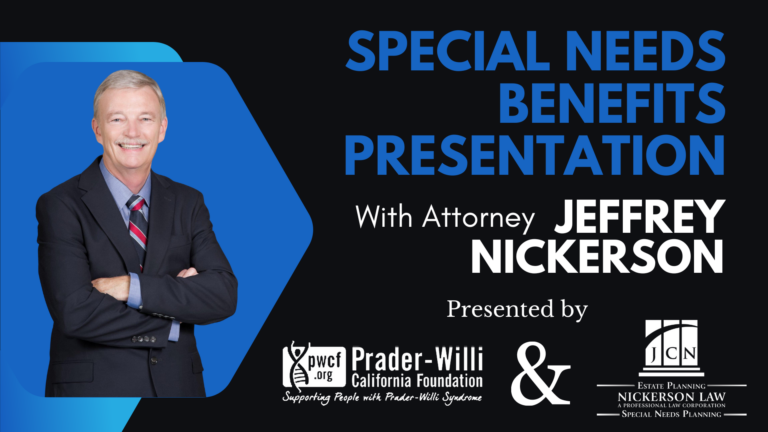


Protecting Your Legacy: Lessons from the Allan H. Goldman Case
Written by Robert T. Nickerson As parents, ensuring the well-being and protection of our loved ones is vital. Estate planning serves as a vital tool in safeguarding our legacy and assets for future generations. To underscore the importance of thoughtful estate planning, let’s examine the tragic case of Allan H. Goldman, a Manhattan real estate…

Which Path Should I Take? A Trust or a Will?
Written by Robert Nickerson When it comes to planning for your family’s future, there’s a lot to think about, especially if you have a loved one with special needs. One big decision is whether to go with a Will-based plan or a trust-based plan. Let’s break it down in a way that’s easy to understand…

An SSI Benefit Gift for Christmas: 2 Checks and Bigger Payments
Written by Robert T. Nickerson 🎄✨ Joyful News for SSI Beneficiaries this Holiday Season! ✨🎄 Greetings, dear readers! We bring tidings of good cheer and valuable information for our friends receiving Supplemental Security Income (SSI) during this festive season. 🎁 Double the Delight: Two Payments this December! 🎁 ‘Tis the season of giving, and the…

Safeguarding Your Legacy: Navigating the Rise of AI-Driven Voice Scams in Estate Planning
Written by Robert T. Nickerson In an era dominated by technological advancements, the landscape of estate planning has encountered a new challenge—one that strikes at the heart of familial bonds. Recent times have witnessed a surge in scammers utilizing artificial intelligence (AI) to replicate the voices of loved ones, exploiting the emotional vulnerabilities of unsuspecting…

Estate Plan Differences Between Tina and Ike Turner
Written by Robert T. Nickerson Estate planning is a crucial aspect of managing one’s wealth and assets, ensuring the smooth transition of resources to loved ones after one’s passing. In the case of iconic musicians Tina Turner and Ike Turner, their divergent estate plans and legacies offer valuable insights into the importance of careful planning…

Pooled Trust Vs. Self Settled Special Needs Trust
Written by Jill Roamer J.D. A pooled trust is also known as a d4C trust because it is authorized by US Code 1396p(d)(4)(C). It is established and managed by a non-profit organization and is funded by the individual with special needs, for that individual’s sole benefit. An individual’s pooled trust is a subaccount within a…

New Technology Allows for Mind-Controlled Wheelchair Without Need for Brain Surgery
Written by Jill Roamer J.D. CIPP/U In recent years, there have been technological breakthroughs to help folks with disabilities—robotic limbs, telepresence robots, and platforms to assist with communication. These new technologies give some the ability to be more independent and lead more fulfilling lives. Now, there is a new wheelchair that can be controlled by…

How A.I. could have a Future in Estate Planning and Special Needs Trusts
Written by Robert T. Nickerson Did you know that ChatGPT has been able to pass the Bar now? For those that have been playing around with the popular A.I., people have been using it for a lot of things such as responding to texts, writing stories on whatever people want and even writing essays for…

Love and Mercy: Brian Wilson and a Beach Boy’s Conservatorship Battle
* The following is an article that was written by ChatGPT. Changes were made by the web site administrator to better reflect accuracy Brian Wilson, the legendary musician and songwriter behind the Beach Boys, had been in a long-standing legal battle over his conservatorship. A conservatorship is a legal arrangement in which a court-appointed guardian…
